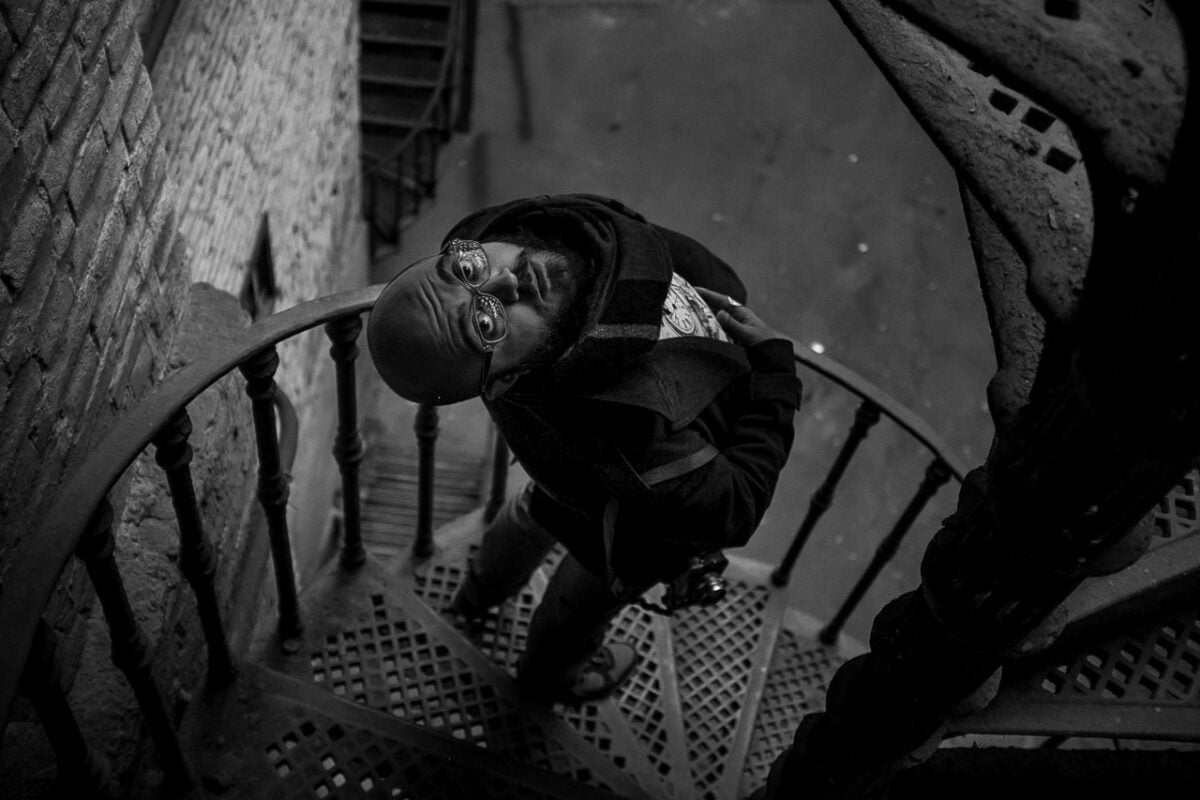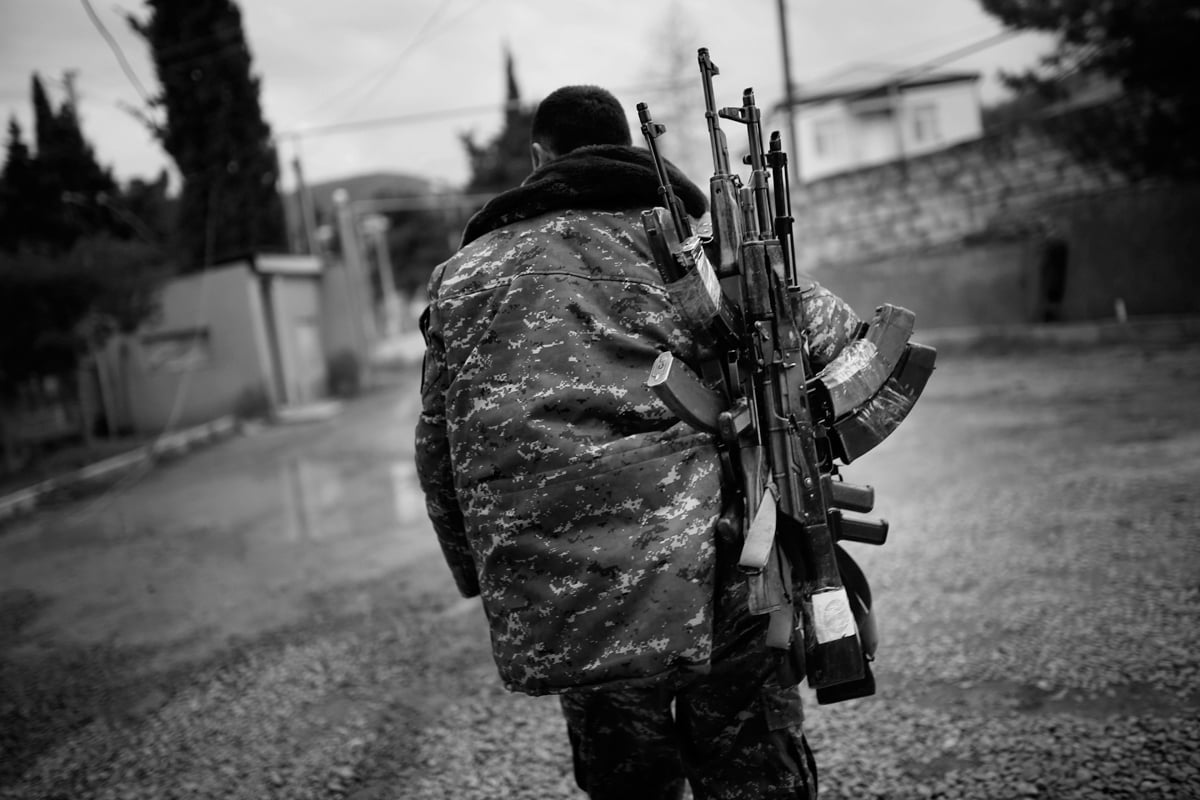
“Time is not a loan you have taken that you have to repay every month. Time is a very personal unit that we are all reinterpreting now,” said Vahan Stepanyan, co-founder and photographer of PAN Photo.
Self-isolation is an opportunity for Vahan to have a dialogue with time, not only to take photos but also to create music projects. For example, Tigran Hamasyan’s complex and archival styled music video, which began ten years ago but the quarantine helped bring it together (it is dedicated to Artavazd Peleshyan, or rather a homage to his editing techniques).
Or organize the participation in the SOUQ music festival-marathon, when Armenian musicians were on stage (online) for 39 hours.
Vahan Stepanyan is trying to understand what today is. And who can speak about today on behalf of today?
He approaches the photo with the same logic.
For many years, Pan Photo has been collaborating with almost all major international news agencies, delivering the most important photo packages of the day. After July 12, 2020, the package includes photos taken on the Armenian-Azerbaijani border.
Vahan says that in addition to the fact that the photos must be accurate, technically flawless, the emotional background and, most importantly, the accompanying text is mandatory.
Isn’t a photo alone enough? Must there be text for it to be understood correctly?
The photo and the short description, the caption, appear together in the world media. And this means that the photo we want will appear in more than a thousand media with only the text we want. It is a great informational achievement because that is how Armenia creates context.
Of course, we edit any text even letter by letter (for example, where to write Nagorno Karabakh, where to Artsakh, where to write an independent republic). The text accompanying the photo that goes out into the world is very important.
We understand very well what an influential tool a photo is.
After all, what is a photo? In addition to being information, mostly journalistic information, a photo can touch different emotional points. Now, when there is a war, people want to see not the killed or bloodied officer, but the victorious soldier who is now doing his job in Tavush.
A photo can create an emotional field, a video cannot do that yet. Maybe in a few years, when everyone has enough internet speed or phone power.
Today, power is in a photo. And I would want us to really appreciate the photos.
I think it is appreciated well.
I would not say so. Today, photographers seem to persuade government agencies to use their work, skills and connections. Naturally, we go to the border with our money and take the kind of pictures under the gunfire, which then becomes widely spread on the Internet.
And yes, the photos that will come out to the world should show how strong and combative our army is. Moreover, right on the border.
And it is interesting that this border is not only physical but also ethical. It may look like a very brittle layer of ice, but it’s a very strong layer.
And which photo is in demand in the international media?
The international media very clearly assesses your attitude to work. First, you need to be fast.
And I’m personally used to being fast. And I have my formula: if there is an hour to shoot, I will spend half an hour on the actual shooting, and the first half-hour I will think about how to shoot. I do not panic. I have one minute? Then I will think for half a minute.
I always share the allotted time so that I can zoom in with my mind, make the time bigger, and the shot.
Imagine that we have the ability to zoom in to eternity and reach one pixel. It’s very good exercise.
That’s already Malevich’s “Black Square.”
In fact, the most important question we all ask each other is what connects us. What is it that allows you to sit side by side and talk, knowing that this is a good time to spend your day, your week, your life? I think everything depends on that answer. I don’t know, maybe there should be an overlap of values.
And if we go back to the topic of photography, it turns out that we need to know very clearly that a journalistic photo, especially in today’s reality, should be more than just a well-captured shot.
Today, anyone can capture anything in the yard of their village house without a high-quality lens or equipment. Just take a picture of how a drone explodes, thinking in your mind, it’s hit. And that one shot is enough for the military specialists to enlarge, clean, and see what we are dealing with.
The information is just that moment, that “it’s hit” that everyone is spreading, discussing, mentioning the price of the destroyed device – $30 million.
And there you realize that the fact-photo, where something shoots and something explodes, in a word, any action takes place, becomes secondary.
The emotional perception of photo stories is much more expensive today. In 2016, for example, when we were capturing the April war on the front lines, I always wanted to photograph portraits of the boys, not the devastation and explosions. The human factor is unspeakably more important than border operations.
Now if we approach the children walking in Yerevan and ask where Tavush is, many will not know. But they will know for sure that the soldiers are in their positions in Tavush. And so it is necessary to show the soldiers, not Tavush, which is very comprehensive (both Dilijan, Aygepar and Ijevan).
Recently, I was very angry that the anniversary of actor Frunzik Mkrtchyan passed unnoticed. After all, the 90th anniversary was an occasion to celebrate him. We went to Gyumri, took the archive photos out of the museum (there were stunning shots in his family albums) and decided to publish an article on pan.am at least once a week.
There is a level of sadness that is fundamental. And that sadness lingers in his photos, creating a fantastic feeling.
Now back to the border. A portrait of a soldier can be taken by any photographer. And all the pictures will be different.
But a deep psychological layer will be created by the photographer who will feel themself to be a part of the situation, and will not be just a light, shadow, chemical and mathematical calculator.
Of course, all the technical components, the composition, etc. are possible, but they are in the past stage.
And now?
Now the important thing is your inner conviction, that you are part of the situation and in general … you have the right to take photos.
We take thousands, millions of photos over the years, but we only show a few. We can fill the net with what we do and get ten times more likes or views. But we do not, it makes no sense.
I do not know how to say it so that it doesn’t sound very pathetic, but you are responsible not only for your action but also for the result of your action.
As the tension at the border began, many media outlets used my portrait of a soldier with guns on his back. And it was taken in 2016, but it’s this same photo that best conveys the symbolism of the situation.

It is not a picture of war, but that’s what a war is. Accumulated information that is emptied onto the viewer in one shot.
Is it right when journalists are not allowed to enter the border zone?
It’s very right. Aside from the fact that the situation is unpredictable (this is just an attempt at attack), there are many nuances: do you know where you will put your foot; if you have to run, do you have enough physical training; after all, what shoes will you wear?
At Reuters, for example, journalists covering war must be screened once a year with minimum military standards. Imagine what would happen if all our media organizations sent one photographer to the border.
It is true that trained photographers do their job and make the photos open to everyone. And even if they do not want to mention the name of the photographer, God be with them, let them not mention it.
I would also like the journalists to always emphasize that in 2016 the hostilities were in Karabakh, and in 2020 in Armenia. This is the key point: we are talking about Armenia for the first time. And the work of photographer Narek Aleksanyan in the first days in the border villages is very important.
He showed with a photo, look, now in these villages, there are people, children, every day. They are by our side, they are us.
And they are only half an hour away from, say, the Georgian border. The world saw the feeling of being close to that.
In addition to being close, we also respond quickly.
The speed of visual perception has changed. Remember how we flipped through virtual pages in the age of forums and live chats, looking slowly, long and hard.
Then came Facebook, where there were so many pictures, and we started flipping through them faster, stopping to look at a few pictures but scrolling through most of them. Only the visual offering of Instagram was added to it. Now TikTok has appeared, and I’ve seen kids flipping through it, just running across the pages at breakneck speed.
In just twenty years, we have come to the point where everyone is already feeling at their own pace how fast we are living.
But the important thing is not the technique and technology (you can shoot with any phone, I’m sure most people use no more than about 20% of their phone capabilities), but the question of what you want.
Everyone is taking photos now and mastering the process. And I’m very happy that the photographer has not had a monopoly on photography for a long time, because it’s at that point that you can notice the difference.
A real photographer falls a little ahead of time. In other words, when searching for a shot, they calculate not the present moment, but the next one, which they will take.
Situational solutions brought situational photos. That is, you see and photograph. Wow, food, let me take a picture of food. Wow, a fountain, let me take a picture of myself near the fountain.
Photos, and life in general, have become situational. And that’s why any photographer has a huge advantage because they create a situation and then take a picture of it.
One more important thing, there is always a choice: to photograph or not to photograph, to be photographed or not to be photographed. After all, we can realize that we can simply choose not to take another photo.
Or not to write another status…
We think situationally without thinking for an extra second. Sometimes one second is enough to realize if we really want to share this photo or this thought. And here begins the complex conversation about what is your personal space, what is public.
And where you are.
Interview by Nune Hakhverdyan


Add new comment
Comments by Media.am readers become public after moderation. We urge our readers not to leave anonymous comments. It’s always nice to know with whom one is speaking.
We do not publish comments that contain profanities, non-normative lexicon, personal attacks or threats. We do not publish comments that spread hate.